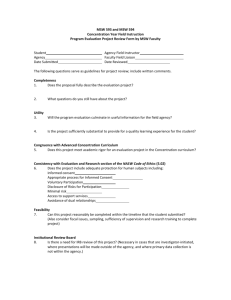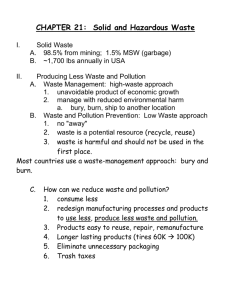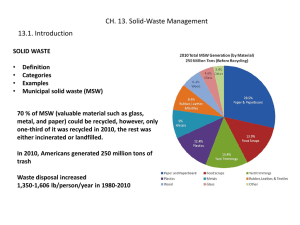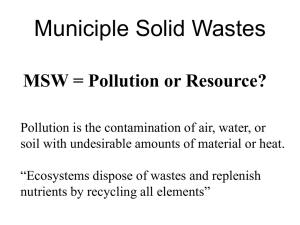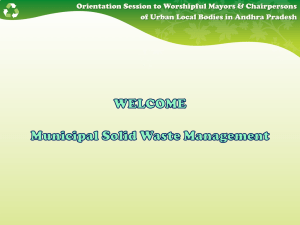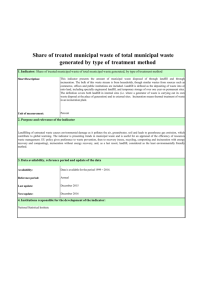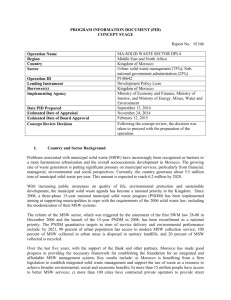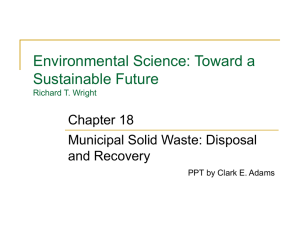FriedlandVocabCh16
advertisement
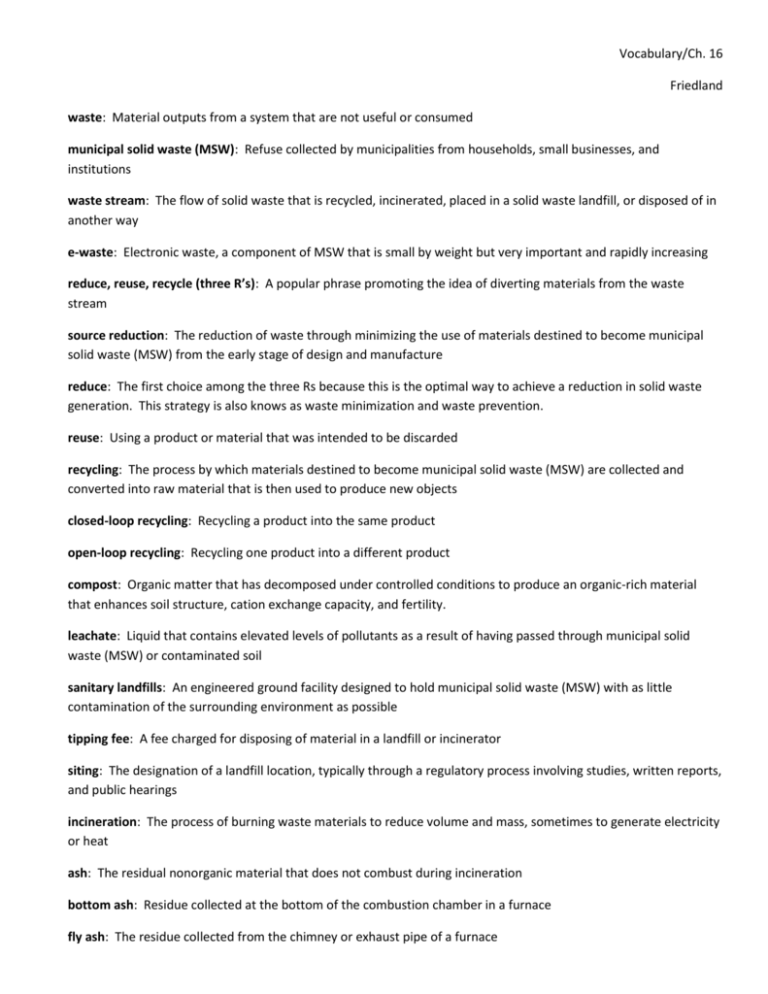
Vocabulary/Ch. 16 Friedland waste: Material outputs from a system that are not useful or consumed municipal solid waste (MSW): Refuse collected by municipalities from households, small businesses, and institutions waste stream: The flow of solid waste that is recycled, incinerated, placed in a solid waste landfill, or disposed of in another way e-waste: Electronic waste, a component of MSW that is small by weight but very important and rapidly increasing reduce, reuse, recycle (three R’s): A popular phrase promoting the idea of diverting materials from the waste stream source reduction: The reduction of waste through minimizing the use of materials destined to become municipal solid waste (MSW) from the early stage of design and manufacture reduce: The first choice among the three Rs because this is the optimal way to achieve a reduction in solid waste generation. This strategy is also knows as waste minimization and waste prevention. reuse: Using a product or material that was intended to be discarded recycling: The process by which materials destined to become municipal solid waste (MSW) are collected and converted into raw material that is then used to produce new objects closed-loop recycling: Recycling a product into the same product open-loop recycling: Recycling one product into a different product compost: Organic matter that has decomposed under controlled conditions to produce an organic-rich material that enhances soil structure, cation exchange capacity, and fertility. leachate: Liquid that contains elevated levels of pollutants as a result of having passed through municipal solid waste (MSW) or contaminated soil sanitary landfills: An engineered ground facility designed to hold municipal solid waste (MSW) with as little contamination of the surrounding environment as possible tipping fee: A fee charged for disposing of material in a landfill or incinerator siting: The designation of a landfill location, typically through a regulatory process involving studies, written reports, and public hearings incineration: The process of burning waste materials to reduce volume and mass, sometimes to generate electricity or heat ash: The residual nonorganic material that does not combust during incineration bottom ash: Residue collected at the bottom of the combustion chamber in a furnace fly ash: The residue collected from the chimney or exhaust pipe of a furnace waste-to-energy: A system in which heat generated by incineration is used as an energy source rather than released into the atmosphere acid deposition: Acid deposited on Earth as rain and snow or as gases and particles that attach to the surfaces of plants, soil, and water hazardous waste: Waste material that is dangerous or potentially harmful to humans or ecosystems Superfund: The Comprehensive Environmental Response, Compensation, and Liability Act (CERCLA), a 1980 U.s. federal act that imposes a tax on the chemical and petroleum industries, funds the cleanup of abandoned and nonoperating hazardous waste sites, and authorizes the federal government to respond directly to the release or threatened released of substances that may pose a threat to human health or the environment Brownfields: Contaminated industrial or commercial sites that may require environmental cleanup before they can be redeveloped or expanded. This program was created by the EPA to assist state and local governments by cleaning up these contaminated industrial and commercial lands that did not achieve conditions necessary to be in the Superfund category. life-cycle analysis (cradle-to-grave analysis): A systems tool that looks at the materials used and released throughout the manufacturing use, and disposal of a product; also known as cradle-to-grave analysis integrated Waste Management: A waste management technique that employs several waste reduction, management, and disposal strategies to reduce the environmental impact of municipal solid waste (MSW) RCRA: (Resource Conservation and Recovery Act) This 1976 Act expanded previous solid waste laws. Its main goal was to protect human health and the natural environment by reducing or eliminating the generation of hazardous waste. It includes “cradle-to-grave” tracking and was amended in 1984 to encourage waste minimization and phased out disposal of hazardous wastes on land. CERCLA: (Comprehensive Environmental Response, Compensation, and Liability Act or Superfund Act) Originally passed in 1980 and amended in 1986, this legislation imposes a tax on the chemical and petroleum industries that is used to fund cleanup of abandoned and nonoperating hazardous waste sites and also authorizes the federal government to respond directly to the release or threatened release of substances that may pose a threat to human health or the environment.
